My Town: Fairfield
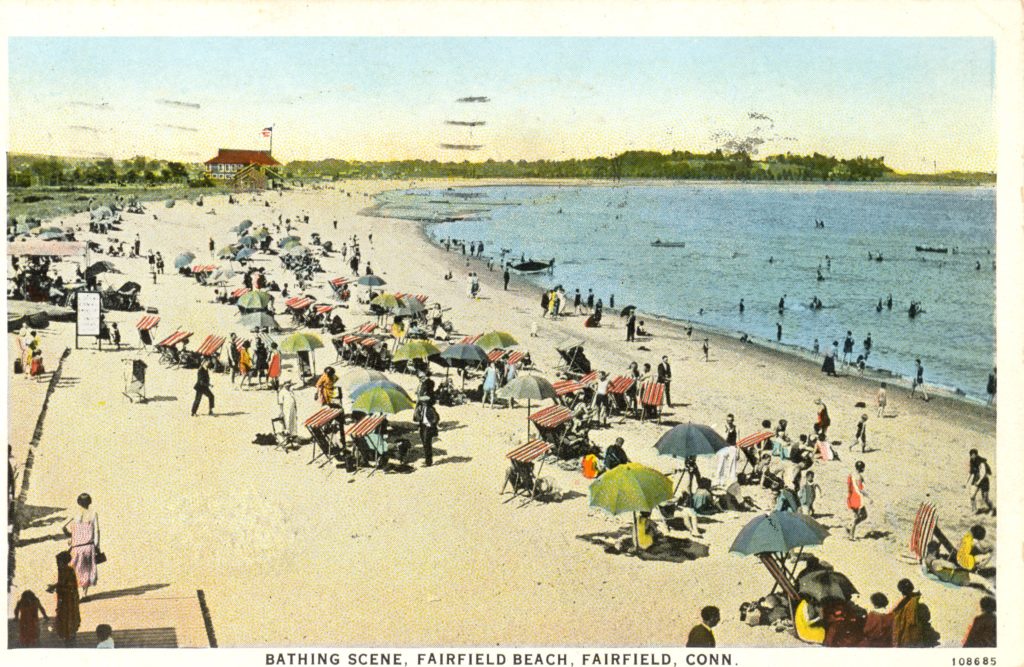
Courtesy of Fairfield Museum
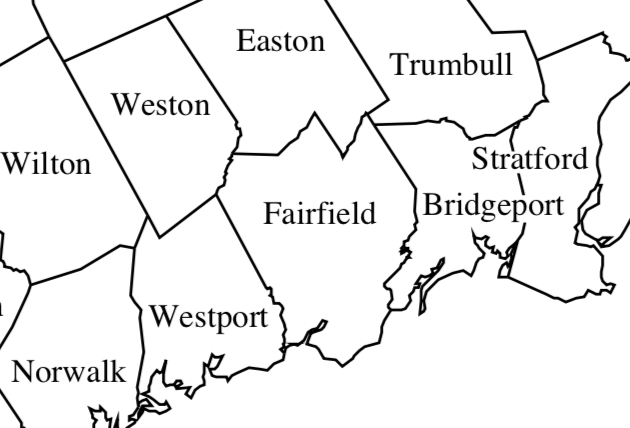
Fairfield’s town borders today. Four towns separated from it between 1787 and 1835.
Where is my town?
Fairfield is in the southwest part of the state. It is on the coast of Long Island Sound. It is bordered to the north by Weston and Easton. Westport is to the west. Bridgeport is to the east. These neighboring towns were once part of Fairfield.
How was it founded?
Fairfield was first settled by the Paugussett people. They called it Unquowa. They chose it for its coastline and fertile land. The Paugusset lived in communities of wigwams. They farmed, fished, and hunted.
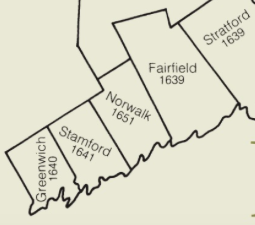
Fairfield’s borders in 1639. Long Island Sound is its southern border.
In 1637 English settlers came from other parts of Connecticut. They came to fight in the Pequot War. The last battle of the war was fought in Fairfield. Read about the Pequot War HERE.
After the war, English colonists settled in the area in 1639. They wanted to live with others who practiced the same Puritan religion. The settlers called their town Fairfield. Perhaps they named it for the way the Native Americans had cleared it for planting. Paugussett people continued to live in the area too.
People from Africa were brought to Fairfield. They were enslaved. The English brought them to work on their farms and in their homes. In 1779 Prime and Prince, two enslaved men from Fairfield, asked the Connecticut General Assembly to end slavery. Connecticut began to end slavery five years later.
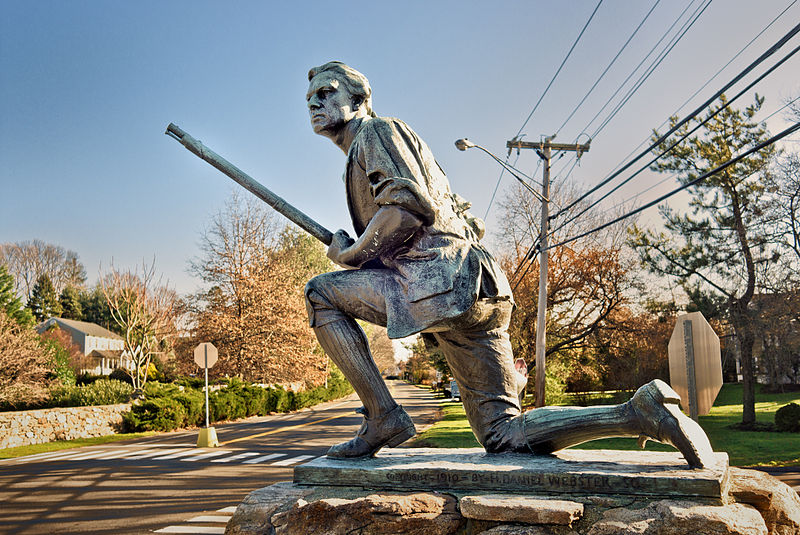
Minuteman statue by Compo Beach in Westport which was part of Fairfield during the Revolutionary War. Much of Fairfield was burned by the British in July 1779.
During the Revolutionary War, the British burned Fairfield. On July 7 and 8, 1779, the British attacked. It was two years after the Battle of Ridgefield nearby. The British were attacking easy targets near the coast. People did their best to defend the town. But the destruction was terrible. It took a long time to recover. Read more about the burning of Fairfield HERE.
How do residents make a living?
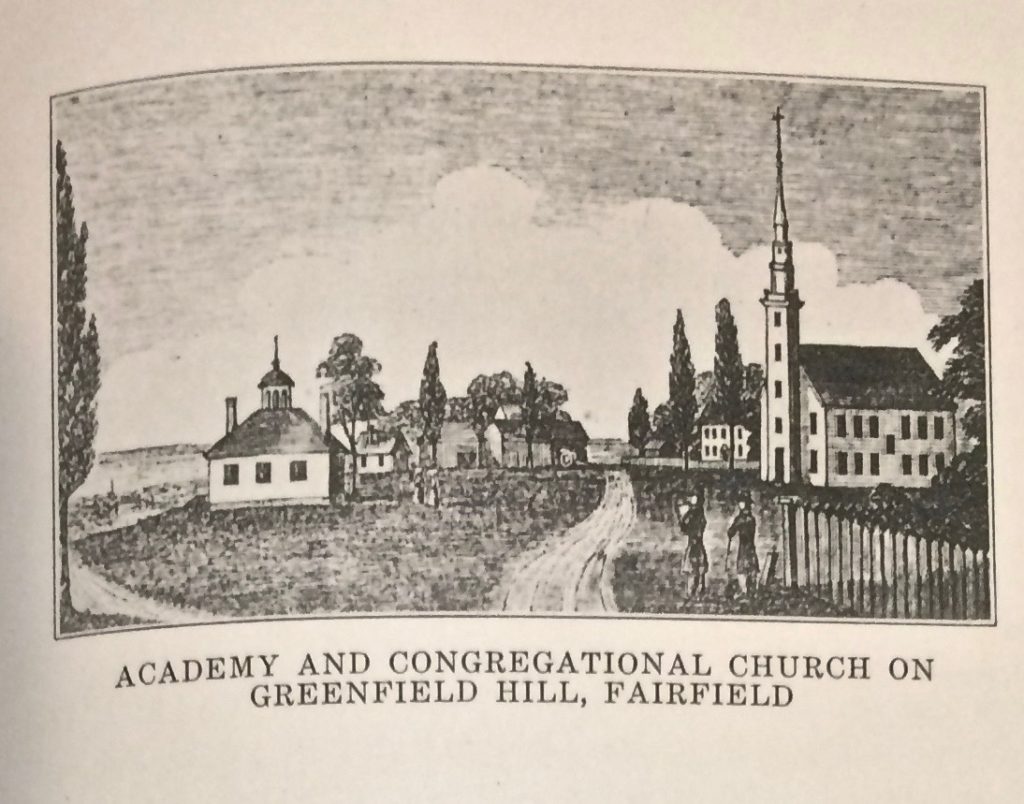 In the 1700s Fairfield was a town of farmers. The town also had merchants and traders. They sold things that people could not make themselves. Some people were shipbuilders, captains, and sailors. Ships transported farm goods to cities like New York. In the mid-1800s onions grown in town were in great demand. Farmers lined up their wagons to bring onions to ships in the harbor.
In the 1700s Fairfield was a town of farmers. The town also had merchants and traders. They sold things that people could not make themselves. Some people were shipbuilders, captains, and sailors. Ships transported farm goods to cities like New York. In the mid-1800s onions grown in town were in great demand. Farmers lined up their wagons to bring onions to ships in the harbor.
In the 1970s General Electric moved its main offices to Fairfield. Many people from Fairfield worked there.
Today many Fairfielders work in corporate or industrial jobs out of town. Some work nearby in Bridgeport. Others work in New York City. Many people work in town, too. Fairfield has many local businesses. It has restaurants, shops, and two universities. Pepperidge Farm, makers of bread and goldfish crackers, was founded in Fairfield.
How did it grow?
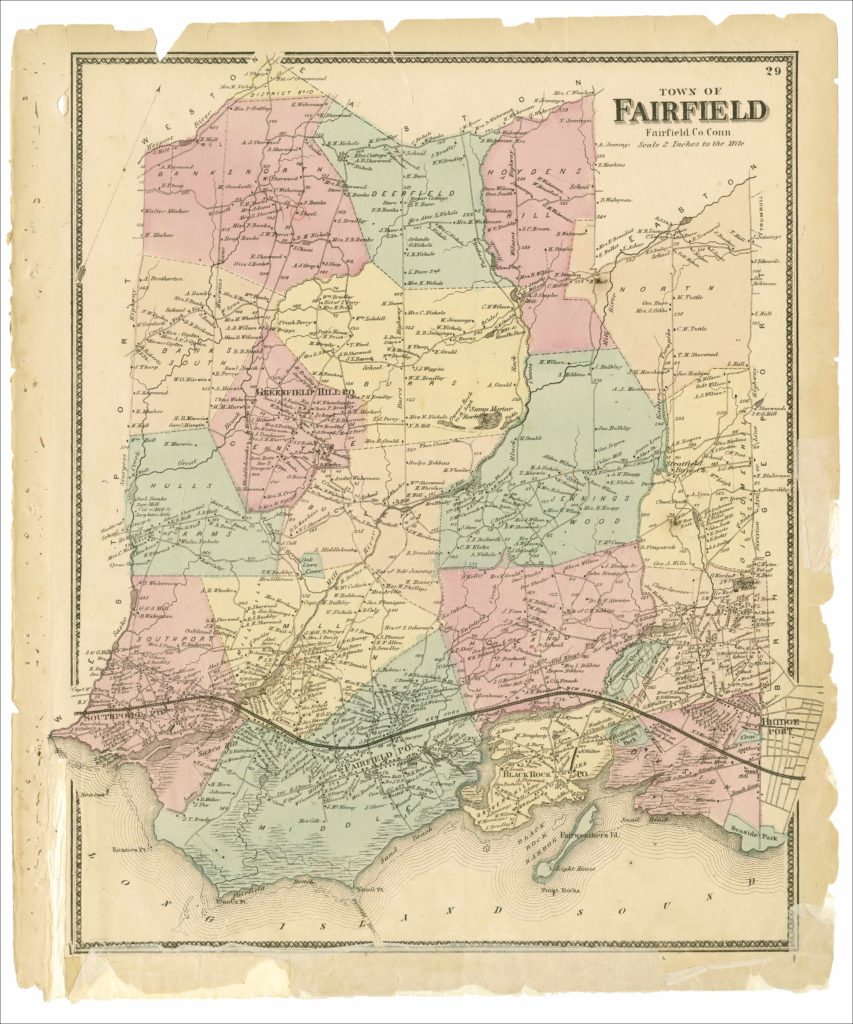
Map of Fairfield in 1867 after the railroad came through town. F. W. Beers Atlas, 1867. Courtesy of Fairfield Museum
Fairfield was the center of Fairfield County. The county courthouse was in Fairfield on the green. People came to town when they had business with the court. They stayed in taverns or inns nearby.
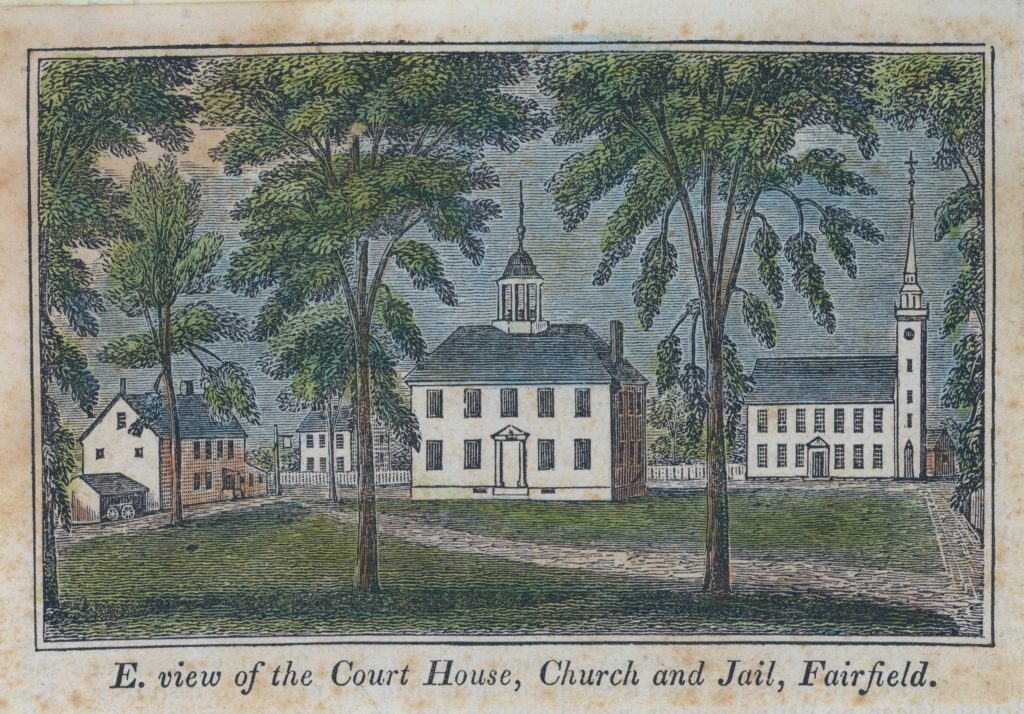
Fairfield’s town green in 1836, by John Warner Barber. This shows the town rebuilt after the British attack in 1779. Courtesy of Fairfield Museum
The Kings Highway was a main road. Many travelers used it. It connected New York and Boston. That road is now called the Boston Post Road or Route 1.
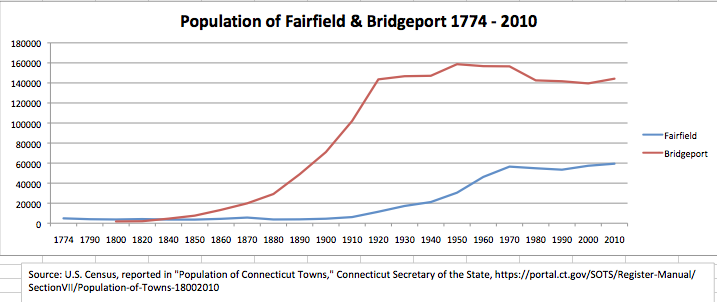
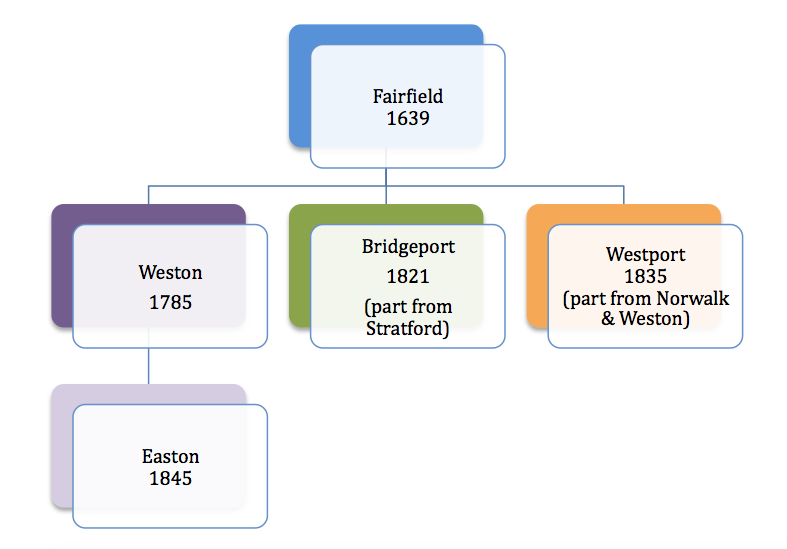
Fairfield and the towns that split off from it, with the year they split off.
As the town grew it split apart. Westport, Weston, Easton, and Bridgeport split off from Fairfield.
In 1848 the railroad came to town. It made it easier for people to get to their jobs. It helped companies get their goods to market.
Factory jobs nearby also attracted workers. From the 1880s to the 1920s many immigrants from Europe came to Fairfield. They came from Hungary, Sweden, Italy, and Poland to Bridgeport and Fairfield. They worked in factories that made sewing machines, clothing, and metal tools.
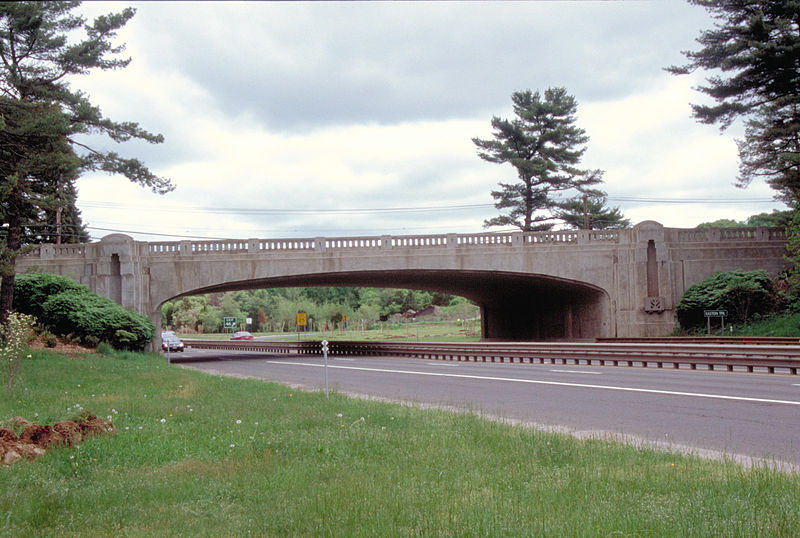
The Merritt Parkway runs through Fairfield. Photo: Dennis Adams, Federal Highway Administration
The Merritt Parkway was built in the 1930s. The Connecticut Turnpike, or Route 95, opened in 1958. These new roads brought MORE people to and through Fairfield. The town grew quickly in the 1950s and 1960s. Many new houses, roads, and schools were built.
Who are its notable people?
Roger Ludlow was born in England in 1590. He helped to found Fairfield in 1639. He set up the town’s land and government. He was a lawyer. He was a leader of the Connecticut colony. He helped to write the first book of laws.
Prince and Prime were African-American men enslaved in Fairfield. They wrote a petition in 1779. Their petition asked Connecticut to end slavery. Their petition was the first to ask the colony to stop slavery. It was the first to say that everyone should be equal. The General Assembly did not agree to their request. But in 1784 it did pass a law that would eventually end slavery.
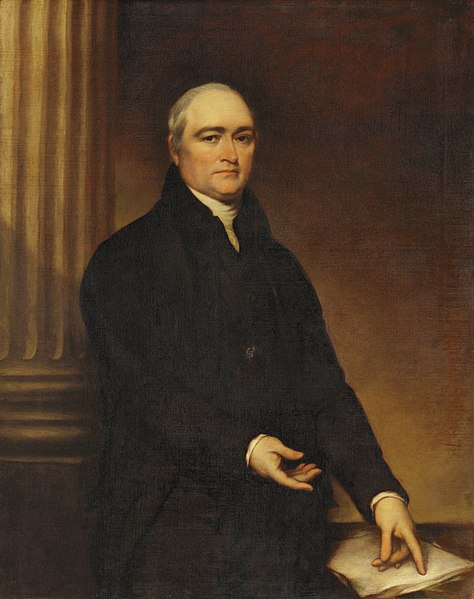
Timothy Dwight IV, President of Yale College. Yale University Art Gallery
Timothy Dwight was born in Massachusetts in 1752. He studied at Yale College in New Haven. He opened a school in Fairfield. The school was seen as one of the best in New England. Students came to his school from all over. He was also the minister of the Greenfield Hill church in Fairfield. He wrote books of poetry. He also wrote about politics. He became president of Yale College. He was an important leader there.
Mabel Osgood Wright was born in 1859 in New York. She moved to Fairfield in 1884. She became a nature writer. She started by writing down what she noticed in her backyard. She published The Friendship of Nature (1894), Birdcraft (1895), and Flowers and Ferns in Their Haunts (1901). She also wrote books for children. She wanted to encourage young people to appreciate nature. She founded the Connecticut Audubon Society in 1896. She also created the Birdcraft Sanctuary in Fairfield. It was one of the first of its kind.
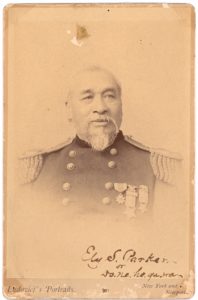
Ely Parker. Courtesy of the Fairfield Museum
Ely Parker was the son of a Seneca Indian leader. He was born in New York State in 1828. His Seneca name was Ha-sa-no-an-da. When he went to a Christian school he changed his name to Ely Parker. He wanted to speak up for his people. He became an engineer. He helped the Seneca buy back some of their land. During the Civil War he was an assistant to General Ulysses S. Grant. He came to live in Fairfield after the Civil War. He worked as a businessman in New York and later worked for the police department.
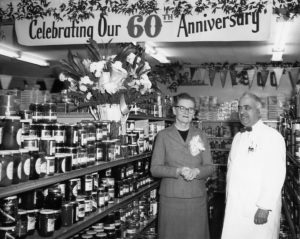
Pepperidge Farm’s Margaret Rudkin with grocer Domenic Mercurio who first sold her healthy bread. Courtesy of Fairfield Museum
Margaret Rudkin was the founder of the Pepperidge Farm company. In the 1930s she began baking healthy bread for her children who had allergies. Other people wanted to buy it too. She baked bread at her house in Fairfield and hired workers to help. When the business grew bigger, she moved it into a factory building. Pepperidge Farm became a successful business, and it continues today. Read more about her story HERE.
Leonard Bernstein was an American composer, conductor, and musician. He is famous for composing music for Broadway shows like West Side Story and Peter Pan. He was the first conductor to give talks about classical music on TV. He and his wife bought a house in Fairfield in 1962. He often composed music there. His music is enjoyed by people young and old.
James Blake is a professional tennis player. He was born in Yonkers, New York in 1979. He moved to Fairfield and went to Fairfield High School. He was once ranked number 4 in the world in singles tennis. He has participated in the Beijing Olympics, the 2006 Tennis Masters Cup, and the quarterfinals of both the U.S. and Australian open tournaments.
Thanks to the Fairfield Museum for assistance with My Town: Fairfield.
Visit the Fairfield Museum and History Center, 340 Beach Road, Fairfield. fairfieldhistory.org






 In the 1700s Fairfield was a town of farmers. The town also had merchants and traders. They sold things that people could not make themselves. Some people were shipbuilders, captains, and sailors. Ships transported farm goods to cities like New York. In the mid-1800s onions grown in town were in great demand. Farmers lined up their wagons to bring onions to ships in the harbor.
In the 1700s Fairfield was a town of farmers. The town also had merchants and traders. They sold things that people could not make themselves. Some people were shipbuilders, captains, and sailors. Ships transported farm goods to cities like New York. In the mid-1800s onions grown in town were in great demand. Farmers lined up their wagons to bring onions to ships in the harbor.






